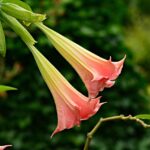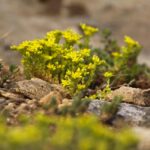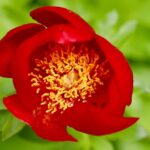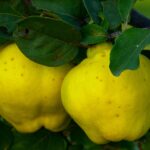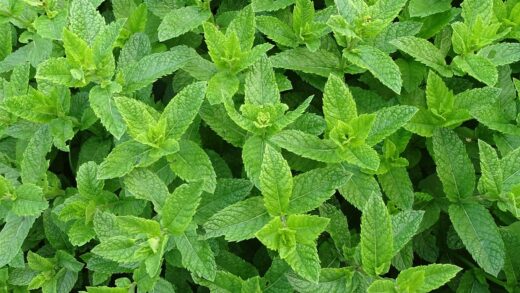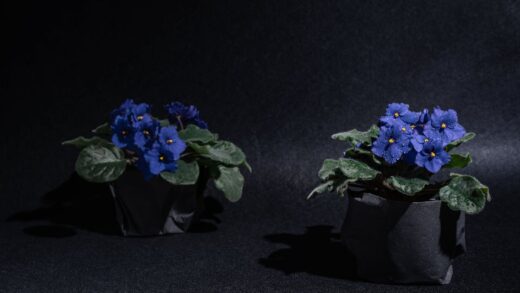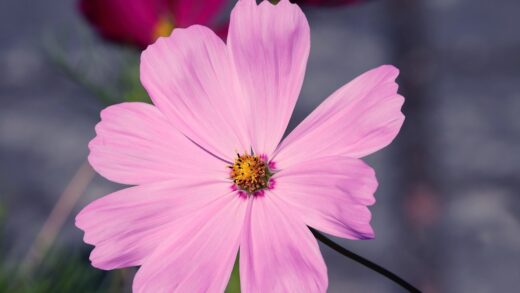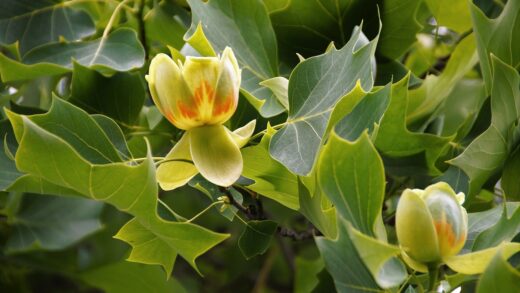Laurustinus, a gem in the winter garden, offers a remarkable display of flowers and foliage when many other plants are dormant, making it a highly valued shrub for year-round interest. Its evergreen nature provides a constant backdrop of deep green, while its clusters of pink buds open into fragrant white flowers from late autumn through spring. Proper care is not overly complex, but understanding its fundamental needs is the key to ensuring this plant thrives and performs to its full potential. This involves a holistic approach that considers its placement, soil conditions, watering regime, and nutritional requirements throughout the seasons, ensuring a robust and healthy specimen that will grace your garden for years to come.
Caring for this shrub begins the moment you decide where to plant it, as the right location will prevent many future problems and reduce maintenance efforts significantly. Laurustinus is quite adaptable but performs best in a spot that receives full sun to partial shade, with morning sun being particularly beneficial. In hotter climates, some afternoon shade can protect the leaves from scorching, while in cooler regions, a sunnier position will encourage more prolific flowering during the gloomy winter months. It is also wise to consider protection from harsh, drying winter winds, which can cause leaf desiccation and damage to the flower buds, diminishing its prized winter display.
The foundation of a healthy plant is healthy soil, and this is certainly true for laurustinus. It prefers a well-drained soil that is rich in organic matter, which helps to retain adequate moisture without becoming waterlogged. Before planting, it is highly advisable to amend the native soil with well-rotted compost or manure to improve its structure and fertility. The ideal soil pH is slightly acidic to neutral, though the plant is known to be tolerant of a wider range, including slightly alkaline conditions, making it a versatile choice for many different garden environments across the country.
Once established, laurustinus is remarkably drought-tolerant, but this does not mean it can be completely neglected, especially during its formative years. Consistent moisture is crucial for young plants to develop a strong and extensive root system, which is their lifeline for water and nutrients. During prolonged dry spells, even mature plants will benefit from a deep soaking to prevent stress, which can manifest as leaf drop or a reluctance to flower. The goal is to maintain a consistently moist but not saturated soil environment to support vigorous growth and abundant blooming.
Understanding the annual growth cycle
To provide the best possible care for your laurustinus, it is essential to understand its annual growth cycle and how its needs change with the seasons. Unlike many garden shrubs that follow a simple spring-to-autumn growth pattern, this plant has a unique rhythm, with its most prominent feature—flowering—occurring during the coolest months of the year. This winter-blooming characteristic means that its energy requirements and vulnerabilities are different from those of its summer-flowering counterparts. Recognizing these shifts allows you to tailor your care practices for maximum impact and plant health.
More articles on this topic
The cycle typically begins in late summer and early autumn when the plant starts to form its flower buds for the upcoming flowering season. These buds, often a beautiful deep pink or reddish color, are held in tight clusters and are an ornamental feature in themselves long before they open. During this period, it is crucial that the plant is not under stress from drought, as this can lead to bud drop and a poor floral display. Adequate moisture in the soil during this bud-setting phase is paramount for a successful winter show.
Flowering commences in late autumn or early winter, depending on the specific climate and cultivar, and can continue intermittently all the way through to early spring. This long blooming period is a significant energy expenditure for the plant, especially at a time when light levels are low and growth is generally slow. The fragrant, star-shaped white or pink-tinged flowers provide a vital source of nectar for early pollinators on mild winter days. After a flush of flowers, the plant may take a short break before producing the next round of blooms.
Following the main flowering season, the focus of the plant shifts towards vegetative growth in the spring and early summer. This is when you will notice the most significant flush of new leaves and stems, as the plant takes advantage of the longer days and warmer temperatures. It is during this time that providing adequate nutrients is most beneficial to support this new growth and replenish the energy reserves spent on flowering. This is also the period when any necessary pruning should be undertaken to shape the plant without sacrificing the next season’s flowers.
Site selection and soil preparation
The long-term success of your laurustinus is largely determined before it even goes into the ground, with site selection playing a pivotal role. This shrub is not overly demanding, but placing it in an optimal environment will result in a more vigorous, floriferous, and disease-resistant plant. The ideal location balances sun exposure, protection from the elements, and sufficient space for the plant to reach its mature size without being crowded. A well-chosen spot ensures the plant can establish itself quickly and thrive with minimal intervention.
More articles on this topic
In terms of light, laurustinus offers great versatility, thriving in conditions ranging from full sun to partial shade. In regions with cool summers, a position in full sun is often best, as it encourages the development of a dense habit and promotes the most prolific flowering. However, in areas with intense summer heat and sun, a location that offers some protection during the hottest part of the afternoon is preferable. This partial shade helps prevent the leaves from scorching and reduces water stress on the plant, keeping the foliage lush and deep green.
Protection from harsh winter winds is another critical factor to consider, particularly in colder climates. Although laurustinus is a hardy evergreen, strong, cold, and dry winds can cause significant damage to the foliage, a condition known as winter burn or desiccation. This results in brown, dry, and brittle leaves, which can be unsightly and weaken the plant. Planting it on the leeward side of a building, fence, or larger evergreen planting can provide a necessary windbreak and create a more favorable microclimate.
Proper soil preparation is the final key to getting your laurustinus off to a great start. This shrub requires soil with excellent drainage to prevent root rot, which it is susceptible to in heavy, waterlogged conditions. If you are working with heavy clay soil, it is essential to amend it generously with organic matter like compost, leaf mold, or well-rotted manure, and potentially some coarse grit or sand. This will improve the soil structure, enhance drainage, and provide a slow-release source of nutrients for the newly developing roots, creating the perfect foundation for a healthy plant.
Pruning for health and aesthetics
Pruning is a vital aspect of laurustinus care, essential for maintaining the shrub’s health, controlling its size and shape, and encouraging abundant flowering. While it is a plant that can be left to grow into its natural form, strategic pruning can significantly enhance its ornamental value. The key is to understand when and how to prune to work with the plant’s natural flowering cycle rather than against it. Improperly timed pruning is the most common reason for a laurustinus failing to produce its characteristic winter blooms.
The ideal time to prune is immediately after the main flowering period has finished in the spring. This timing is crucial because the plant forms the flower buds for the next winter’s display on the growth it produces during the summer. By pruning in late spring, you give the shrub plenty of time to produce new shoots and develop these all-important buds before autumn arrives. Pruning in late summer, autumn, or winter will remove the developing flower buds, resulting in a disappointing lack of flowers.
For general maintenance pruning, the goal is to create a well-shaped plant with an open structure that allows for good air circulation. Start by removing any dead, damaged, or diseased branches, as these can be entry points for pathogens. Next, look for any branches that are crossing or rubbing against each other, and remove the weaker one to prevent wounding. This type of light, selective pruning can be done annually to keep the shrub looking tidy and healthy.
Occasionally, an older, overgrown laurustinus may become leggy and sparse, with most of the foliage and flowers concentrated at the top. In such cases, a more drastic rejuvenation pruning may be necessary to restore its vigor and shape. This can be done by cutting back about one-third of the oldest, thickest stems right down to the base over a period of three years. This stimulates new growth from the bottom of the plant, resulting in a fuller, more attractive shrub without ever removing all of the flowering wood at once.
Container cultivation and care
The adaptable nature of laurustinus makes it an excellent candidate for container cultivation, bringing its winter beauty to patios, balconies, and terraces where in-ground planting is not an option. Growing this shrub in a pot allows for precise control over its growing environment, but it also means the plant is entirely dependent on you for its survival. Container-grown specimens require more frequent attention to watering and feeding than their garden-planted counterparts, as their root systems are confined and have limited access to resources.
Choosing the right container is the first step to success. Select a pot that is sufficiently large to accommodate the plant’s root ball with room for future growth, but avoid a container that is excessively large, as the unused soil can stay wet for too long and lead to root rot. Ensure the pot has ample drainage holes at the bottom, as waterlogged soil is the quickest way to kill a containerized plant. Materials like terracotta are porous and allow for good air exchange, but they also dry out faster, while glazed ceramic or plastic pots retain moisture for longer.
The potting medium used for a container-grown laurustinus must be of high quality and provide excellent drainage while also retaining some moisture. A soil-based compost, such as a John Innes No. 3, is an excellent choice as it provides good structure, nutrients, and stability for the shrub. You can improve the drainage further by mixing in some horticultural grit or perlite. Avoid using standard garden soil, as it compacts easily in a pot, impeding drainage and aeration and potentially introducing soil-borne pests and diseases.
Watering is the most critical aspect of care for a potted laurustinus. The limited volume of soil in a container dries out much more quickly than garden soil, especially during warm or windy weather. Check the moisture level regularly by inserting your finger a few inches into the compost; if it feels dry, it is time to water thoroughly until you see excess water draining from the bottom holes. In winter, the plant will still need water, but its requirements will be significantly reduced, so allow the top few inches of compost to dry out between waterings to prevent the roots from sitting in cold, wet soil.
Managing common challenges
While laurustinus is generally a robust and trouble-free shrub, no plant is entirely immune to problems, and being able to identify and manage common challenges is part of responsible garden stewardship. Most issues that arise can be traced back to incorrect cultural practices, such as poor siting, improper watering, or a lack of nutrients. By providing the plant with its preferred growing conditions from the outset, you can prevent the majority of potential diseases and pest infestations and ensure your shrub remains a healthy, vibrant feature in the garden.
One of the most common issues affecting laurustinus is leaf spot, a fungal disease that manifests as dark brown or black spots on the foliage, sometimes with a yellow halo. This is often exacerbated by overhead watering and poor air circulation. To manage it, avoid wetting the leaves when you water, and prune to thin out dense growth and improve airflow through the plant. Rake up and destroy any fallen, infected leaves to reduce the amount of fungal spores in the area, and in severe cases, a fungicide may be applied.
Pests can also occasionally become a nuisance, with aphids being one of the more frequent visitors. These small, sap-sucking insects tend to congregate on the soft new growth and flower buds, causing distortion and weakening the plant. A strong jet of water from a hose can often dislodge a minor infestation, or you can use insecticidal soap for more persistent problems. It is also important to watch for the viburnum beetle, although laurustinus is generally more resistant than many other viburnum species to this pest.
Another common concern is a lack of flowering, which is almost always linked to incorrect pruning timing. As the plant flowers on wood produced in the previous season, pruning at any time from late summer through winter will remove the flower buds. If your shrub is healthy but not blooming, review your pruning schedule to ensure you are only trimming it back in late spring, immediately after it has finished its main flowering display. Other potential causes for poor flowering include insufficient sunlight or a lack of phosphorus in the soil.










